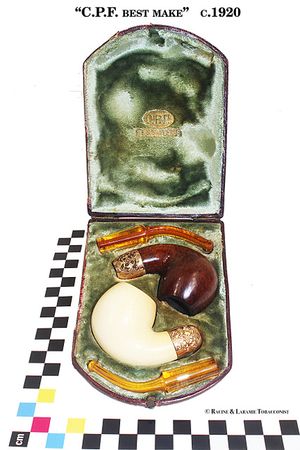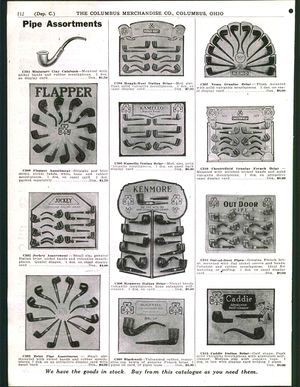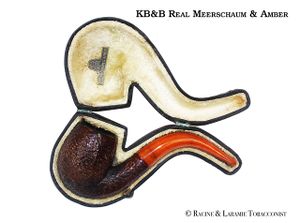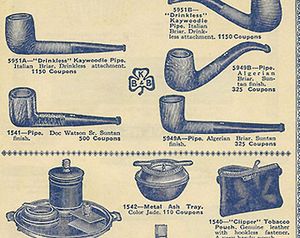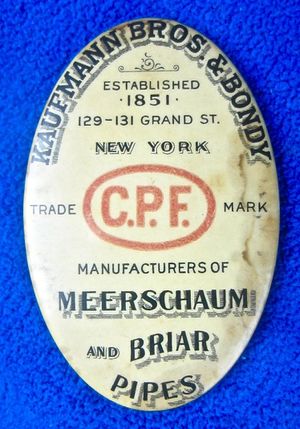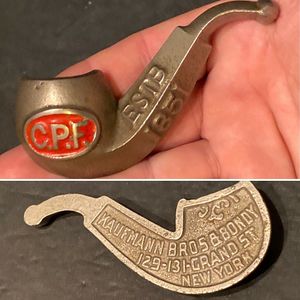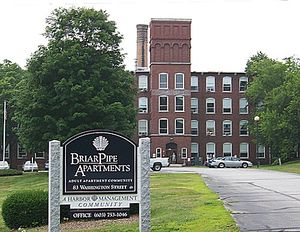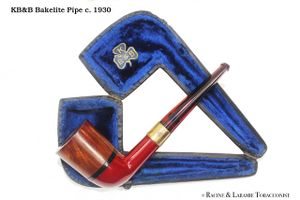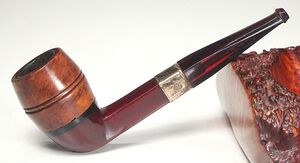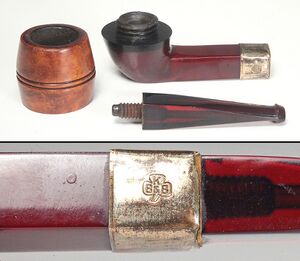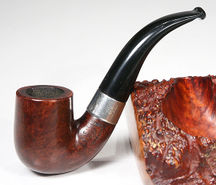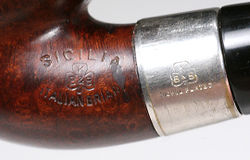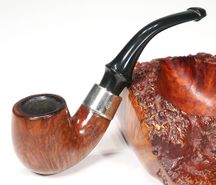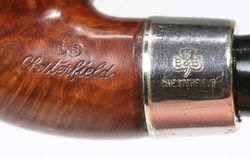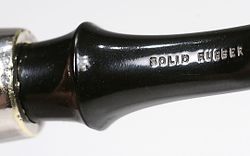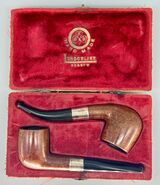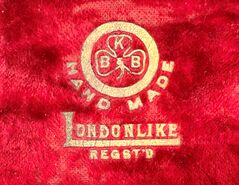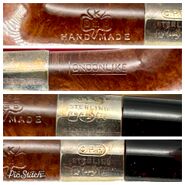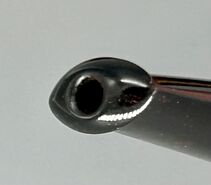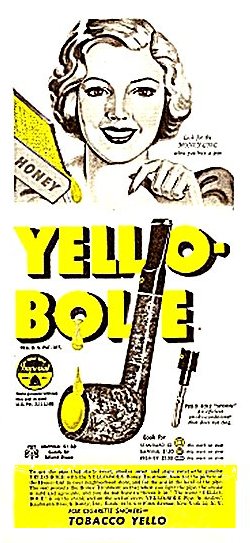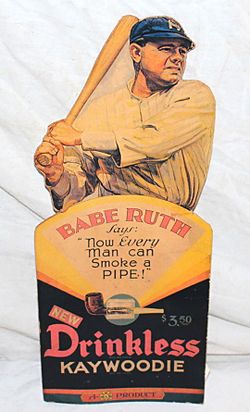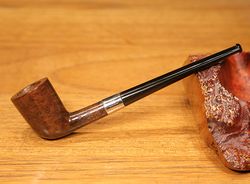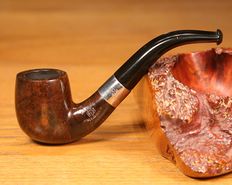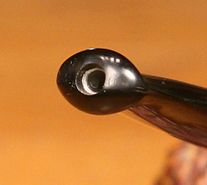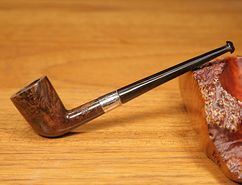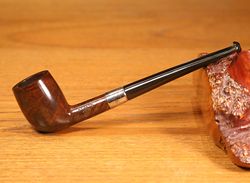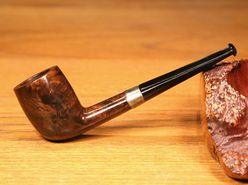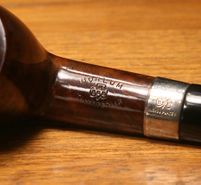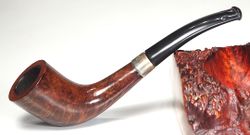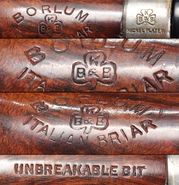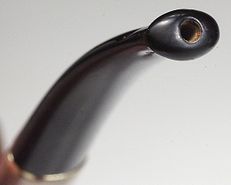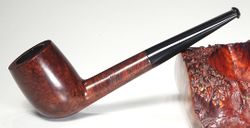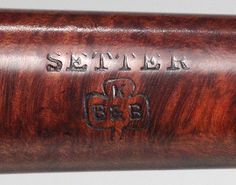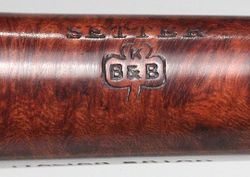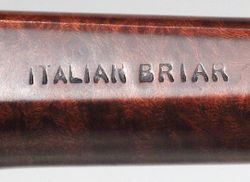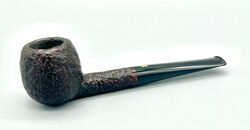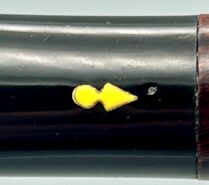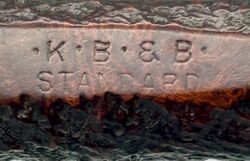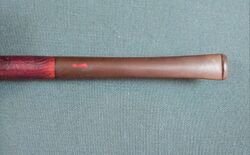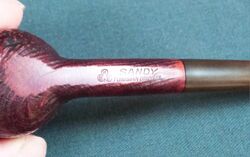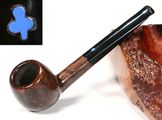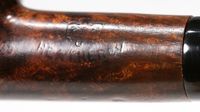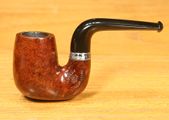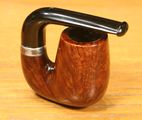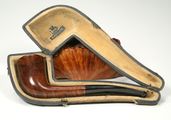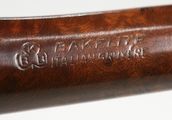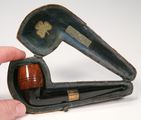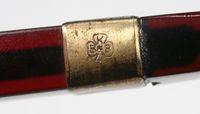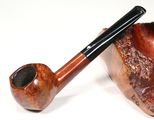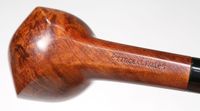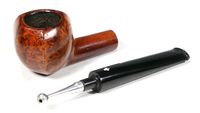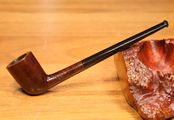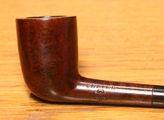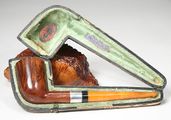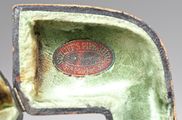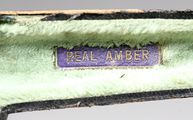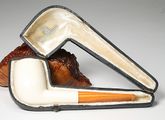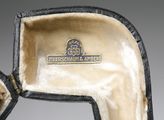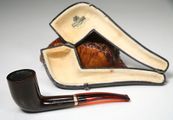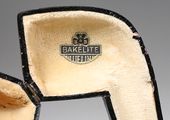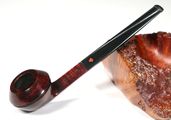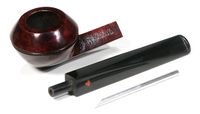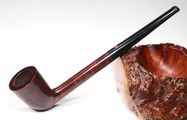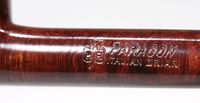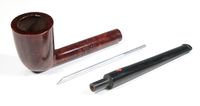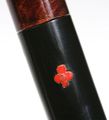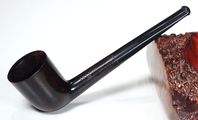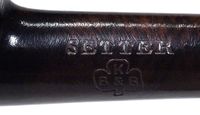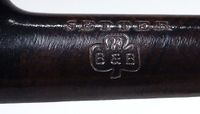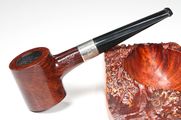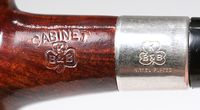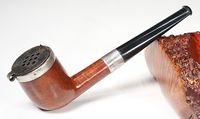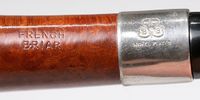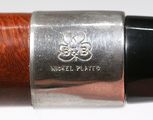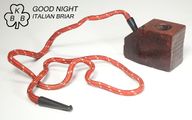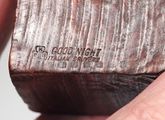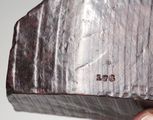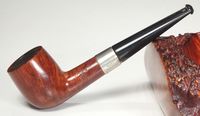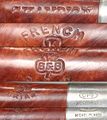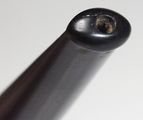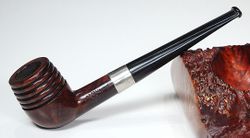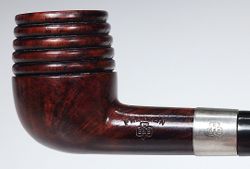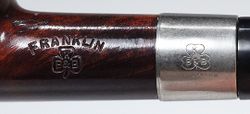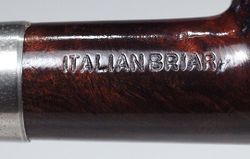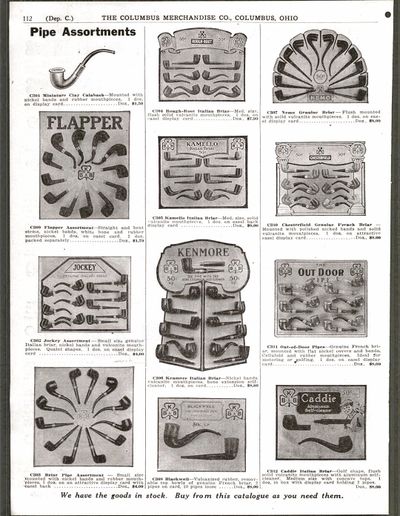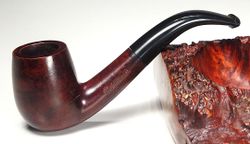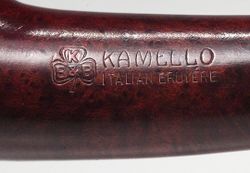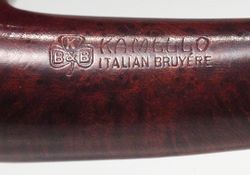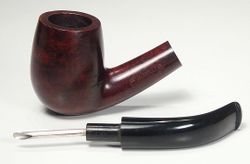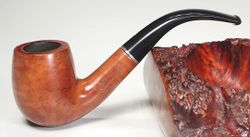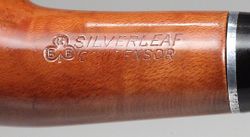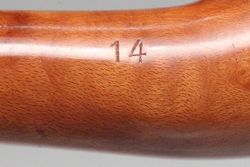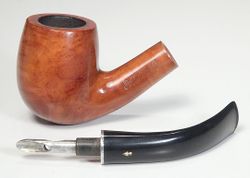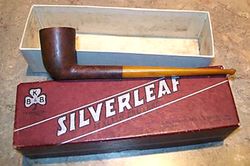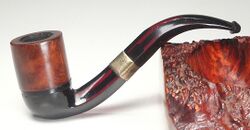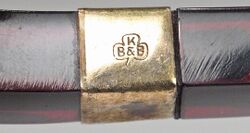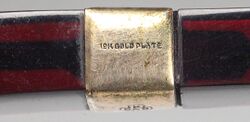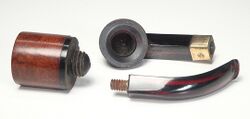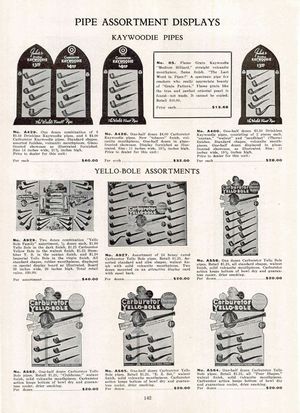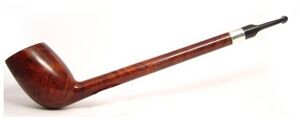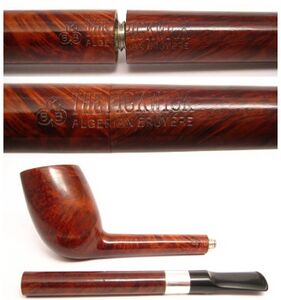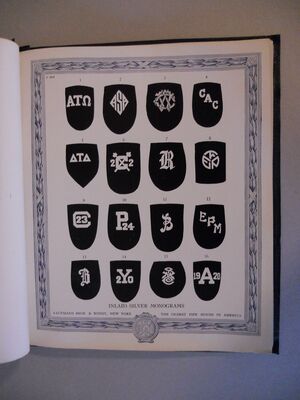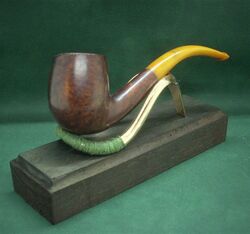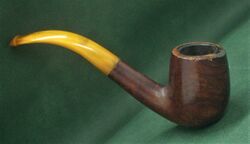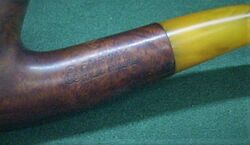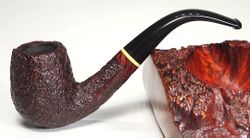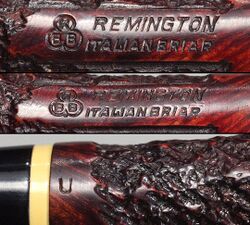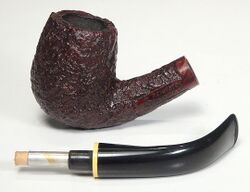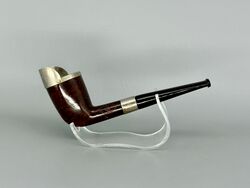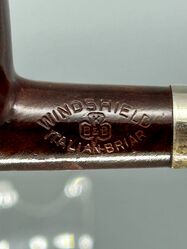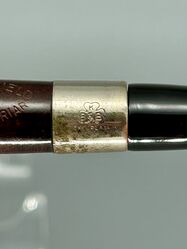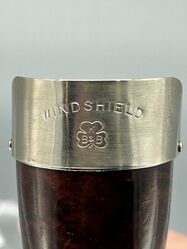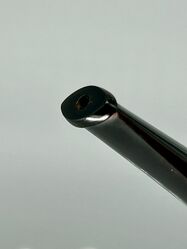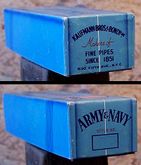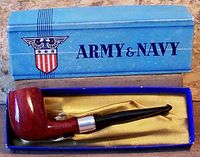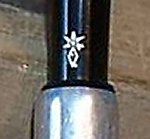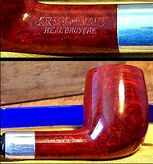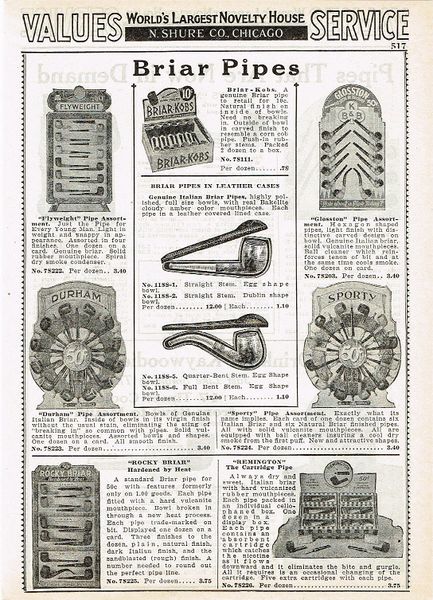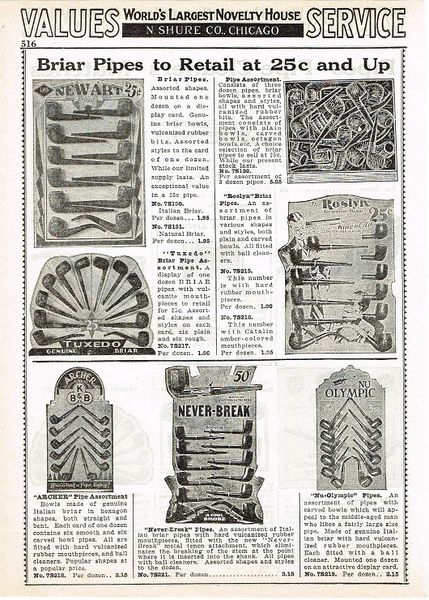Kaufmann Bros. & Bondy
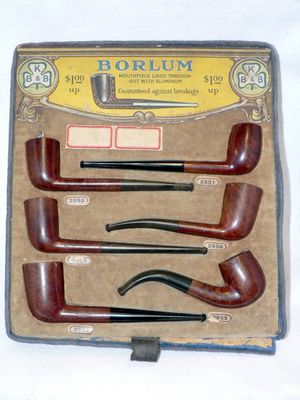
Many thanks to Doug Valitchka for these notes on the early history of KB&B, Kaywoodie
Early History
Kaufmann Bros. & Bondy (KB&B), Kaywoodie has been making pipes since well before the Civil War - around 1851. They peaked in the late 1950's along with most American Briar works. In the early 20th century, their pipes were the standard others were measured by, along with Sasieni, Charatan and Comoy's. There were few other world-class American pipe-crafters (William Demuth Company, early L & H Stern). Their pipes were as good as any of the renowned British firms. Kaywoodie just did not merely produce quantity, they provided quality: in the 1920's they bought the exclusive rights to some of the choicest briar fields in history, hauling out 250 year-old roots the size of 27" TVs and fashioning masterpieces out of this spectacular-grained ancient briar.
Early KB&B (non Kaywoodie)
Kaywoodie was the name a pipe offered by Kaufmann Bros. & Bondy Company (KB&B), first appearing in February of 1919. The Dinwoodie pipe, also by KB&B, appeared in November of 1919. Other KB&B brandings included Ambassador, Heatherby, Kingston, Langley, Melrose, Hollywood, Paragon, Borlum, Sicilla, Cadillac, Capitol Extra, Times Square and Kamello. Sometime before 1924, the Dinwoodie had been discontinued and the Kaywoodie name was beginning to be used on an extensive line of pipes that ultimately would be the name of the company. The origin of the name Kaywoodie is a combination of the K from Kaufmann and wood, as in briar. Not much is known of the original KB&B company other than it was started in 1851 by the German born Kaufmann brothers when they opened a small pipe shop in the Bowery section of New York City. In the back room of this shop, they made their first pipes. From this meager beginning, the Kaywoodie name and organization was to emerge.
When one of the men from the New York office got "gold fever" he carried a large supply of pipes with him to California that he sold along the way. This early "national distribution" did much to build the reputation of KB&B. By the late 1800's, branches of KB&B were opened in Chicago, Atlanta, San Francisco and St. Louis with family and friends acting as agents. The trademarks, for the inlaid cloverleaf and the cloverleaf with the KB&B initials inside, were issued in 1881. KB&B's pipes became more popular and were in constant demand by the end of the century. Orders were streaming back east and KB&B needed to move to larger manufacturing facilities. By 1915 the move was made to larger facilities in the old Union Hill section of Union City, New Jersey. The salesroom offices were located at 33 East 17th. Street, New York. When the Kaywoodie pipe was first introduced by KB&B it came with a hand cut rubber mouthpiece fitted with an aluminum Inbore Tube.
Pre-Kaywoodie KB&B
According to Hacker1, the firm of Kaufmann Bros. & Bondy (KB&B) began producing the Kaywoodie2 Pipe in 1915. Hacker notes that: "The company was originally started in 1851 in New York by two brothers named Kaufmann, who sold meerschaums and clays that a third brother sent them from Vienna. Business thrived and in 1854 the Kaufmanns took in a partner named Bondy. ... The three partners retired in 1898, but their relatives continued on with the firm, which had begun to manufacture their own briar pipes under the KB&B trademark. In 1915 the Kaywoodie brand was created as a marketing umbrella for a new briar pipe which the KB&B company introduced. ..."
The "marketing umbrella" mentioned by Hacker included lower grade Kaywoodies that were later marketed under the "Yello-Bole" name. (According to a 1948 Yello-Bole catalog, "Yello-Boles have been on the market since 1933. About 25 millions of these pipes have been sold"). Hacker concludes his history of Kaywoodie Pipes by noting that: "The KB&B briar pipe brand existed from 1900 until just after World War I (with some overlapping with the Kaywoodie from 1915 -- 1917), and collectors refer to the KB&B as a Kaywoodie transition pipe. During the early years of the 20th century a number of filter systems were designed by the KB&B firm and incorporated into their Kaywoodie Pipes under the names of Synchro-Stem and Kaywoodie Drinkless filters. During the late 1920's and throughout the 30's the Kaywoodie became a highly respected pipe in spite of its filter system (which was popular among many smokers of the era) primarily due to the fine quality of the straight grain and the flame grain models. Unfortunately, the hard-to-get-briar years of World War II marked the decline of the Kaywoodie Pipe, a plummet from which it has never recovered as far as collectors are concerned...."
The pre-Kaywoodie KB&B pipes were marked on the shank with a cloverleaf around KB&B. Some early Kaywoodies had this same marking on the shank, but the practice was dropped sometime prior to 1936. Yello-Boles also had KB&B in the leaf on the shanks, but did not have the ampersand found on Kaywoodies.
- Examples and detail, courtesy Doug Valitchka
A rare example of a cased pair of KB&B LondonLike Handmade pipes with sterling silver bands, orific bits, and showing both C.P.F. and KB&B stamps.1917-19
- A Cased Pair of KB&B LondonLike Pipes, courtesy Fletcher Hiner
In 1932 KB&B expanded their program consisting of KB&B pipes, Reiss-Premier and Kaywoodie as the mainstay brand by introducing the Yello-Bole line. Yello- Bole was designed as an outlet for lower grade briar not used in Kaywoodie production.
At that time KB&B produced their brands in Union City and in West New York, both New Jersey. Deviating from that, Yello-Boles were manufactured by The New England Briar Pipe Company in Penacook, New Hampshire to use this KB&B subsidiary to capacity.
As briar was hardly had during World War II, the KB&B Company embarked on a project of domestically grown briar wood, called Mission Briar or manzanita early in 1941. The Pacific Briarwood Company, a subsidiary founded for this purpose, began harvesting the burls growing on the slopes of the Santa Cruz Mountains of California. Though this wood is botanically the same as briar form the Mediterranean countries, the smoking characteristics were not quite as good and the project was abandoned after the war.
Was it for that reason? Advertising from the 1940's pictures the Yello-Bole "Honey Girl", who gently urges the pipe smoker to smoke the pipe with "a little honey in every bowl." In fact, honey was an ingredient of the material used to coat the inside of the bowl. It was said to provide a faster, sweeter break-in of the pipe.
In 1952, 101 years after the Kaufmann brothers had opened a small pipe shop in the Bowery section of New York City, Kaufmann Bros. & Bondy Company with all subsidiaries was purchased by an unknown company strange to pipe industry. (At least, the new owner was economical because the KB&B managers had to leave their luxurious bureaus on 630 Fifth Avenue, New York - the Rockefeller Center - for new rooms in the factory on 6400 Broadway, West New York.) This interlude ended after only 3 years in March of 1955, when S.M. Frank & Co. Inc. bought Kaufmann Bros. & Bondy, The Kaywoodie Company, Reiss-Premier Corp., The New England Briar Pipe Co. and - of course - Yello-Bole.
- Examples of KB&B Borlums, pre-Kaywoodie, which came with a tube inside the stem to make them 'Unbreakable', courtesy Doug Valitchka
- Example of KB&B Setter, pre-Kaywoodie, courtesy Doug Valitchka
- Example of KB&B Standard, courtesy Fletcher Hiner
- Example of KB&B Sandy, from Tanzanian Briar, courtesy Charles Wilder
- Additional Early KB&B Examples and details, courtesy Doug Valitchka
- KB&B Franklin and details, courtesy Doug Valitchka
- KB&B Kamello, courtesy Doug Valitchka
- KB&B Silverleaf examples and details, courtesy Doug Valitchka
- An unusual KB&B system pipes with a separate bowl, gold band, and Bakelite stem, courtesy Doug Valitchka
Brands
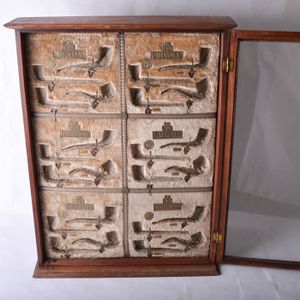
- Ambassador — ?
- Archer -ca. 1933
- Army & Navy — ca. 1940's (?)
- Borlum — ?
- Chesterfield — pat. in 1905
- Cadillac — ?
- Crosby — ?
- Dinwoodie — introduced in 1919; discontinued < 1924
- Fairway -- see example bellow
- Glosston -ca. 1933
- Good Night — ?
- Hamilton --? According to Who Made That Pipe, also Pipephil
- Hawthorne — ?
- Heatherby — ?
- Hollywood — ?
- Imperial — Yello-Bole sub-brand, includes shank extension provided with a metal screw-on tenon (like the Pickwick).
- Kamello — ?
- Kaywoodie — introduced in 1919, Hacker notes it as 1915
- Kingston — ?
- Franklin — ?
- Melrose — ?
- Paragon — ?
- Pickwick — includes shank extension provided with a metal screw-on tenon (like the Imperial).
- Remington
- Rivoli — ?
- Samson — ?
- Sicillia — ?
- Silverleaf — ?
- Times Square — ?
- The Lyon Pipe — Patented 9-19-23
- Thorn — ?
- Shellcraft — ?
- Supremo — ?
- Yello-Bole — introduced in 1932
Please help to complete!
- Example and details of KB&B 'Pickwick', showing the screwed on shank extension. This was also used in the 'Imperial'. Photos courtesy Pipephil.eu
- A 'Fairway' branded bent with a faux amber (likely bakelite) stem, Courtesy Brian Robertson collection
- Remington example and details, courtesy Doug Valitchka
- Windshield example and details, courtesy Gates Collection
- Catalog Pages of various display boards of budget pipes, courtesy Doug Valitchka
- PDF copy of The Truth about Briar Pipes 1935 brochure, courtesy Michael DiCuccio
- You may also enjoying listening to Brian Levine's interview of S. M. Frank president, Bill Feuerbach, on the Pipes Magazine Radio Show
